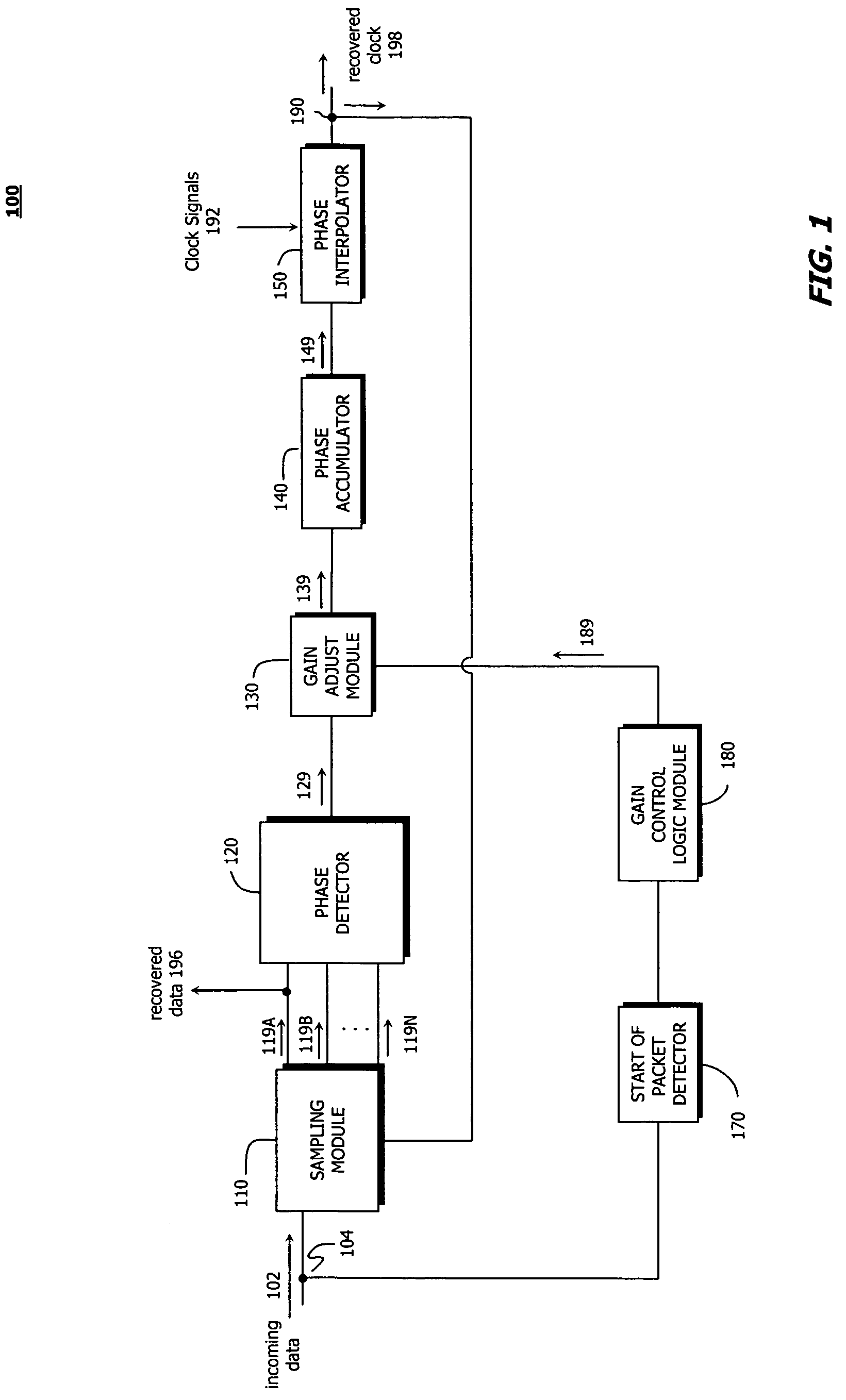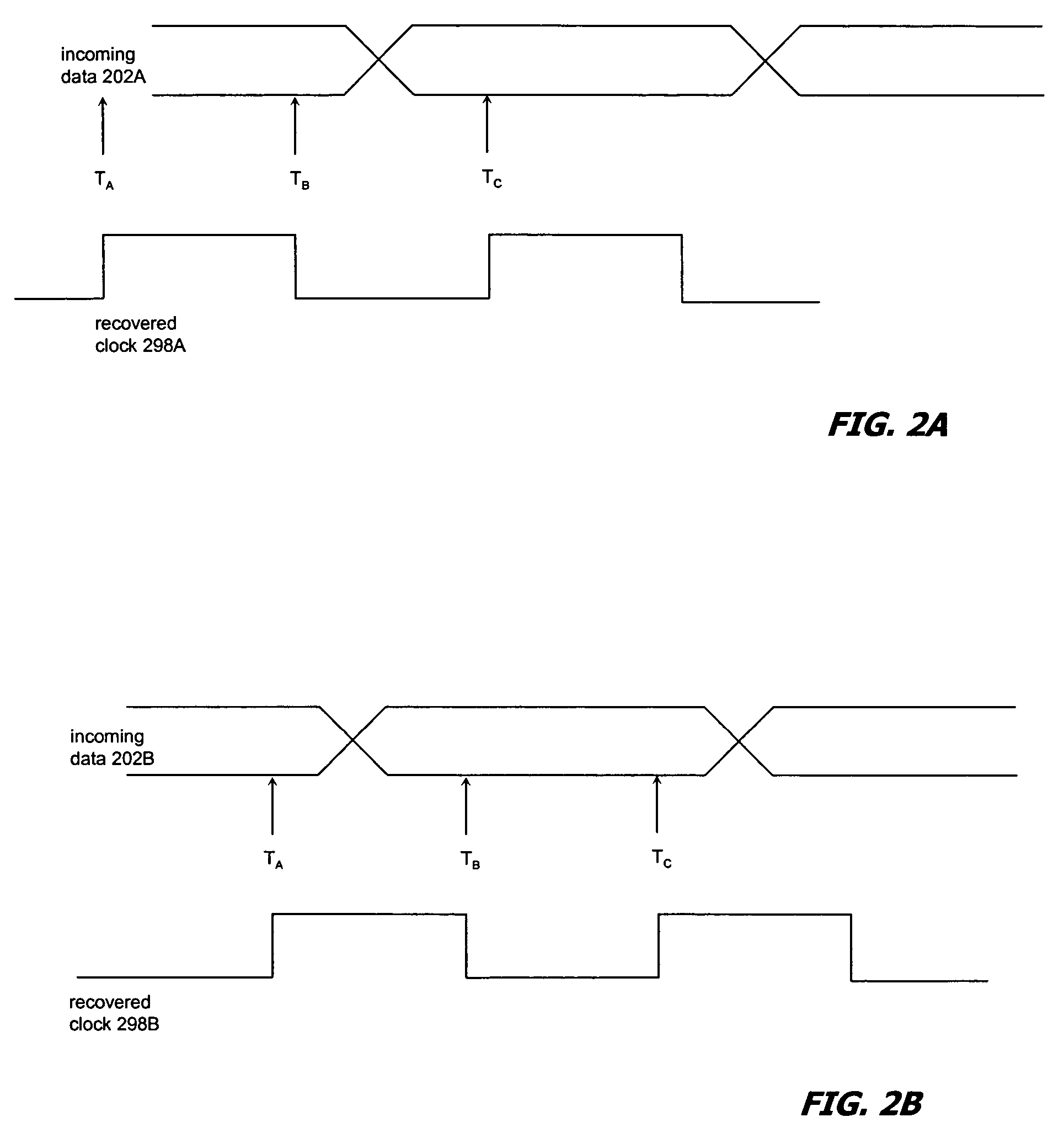High speed clock and data recovery system
a high-speed clock and data recovery technology, applied in the field of communication devices, can solve the problems of circuits that may falsely lock to spurious tones and harmonics of data signals, analog pll circuits are susceptible to instability, and can not meet the requirements of high-speed communications, so as to quickly mitigate the condition and mitigate the meta-stability condition
- Summary
- Abstract
- Description
- Claims
- Application Information
AI Technical Summary
Benefits of technology
Problems solved by technology
Method used
Image
Examples
Embodiment Construction
I. High Speed, Fast Acquisition and Low Jitter Tracking CDR System
A. System Architecture
[0040]FIG. 1 is a block diagram of a high speed clock and data recovery (CDR) system 100 using a first-order digital delay-locked loop (DLL), according to embodiments of the present invention. CDR system 100 provides time varying gain adjustment, allowing high loop gain in the acquisition stage for fast phase locking and small loop gain in the tracking mode for good jitter rejection. CDR system 100 includes a sampling module 110, a phase detector 120, a gain adjust module 130, a phase accumulator 140, and a phase interpolator 150 coupled in series between CDR system input 104 and output 190. CDR system 100 also includes an optional start of packet detector 170 and an optional gain control logic module 180 coupled between CDR system input 104 and gain adjust module 130.
[0041]In system 100, sampling module 110 receives the incoming data signal 102 and the recovered clock signal 198 generated by pha...
PUM
 Login to View More
Login to View More Abstract
Description
Claims
Application Information
 Login to View More
Login to View More - R&D
- Intellectual Property
- Life Sciences
- Materials
- Tech Scout
- Unparalleled Data Quality
- Higher Quality Content
- 60% Fewer Hallucinations
Browse by: Latest US Patents, China's latest patents, Technical Efficacy Thesaurus, Application Domain, Technology Topic, Popular Technical Reports.
© 2025 PatSnap. All rights reserved.Legal|Privacy policy|Modern Slavery Act Transparency Statement|Sitemap|About US| Contact US: help@patsnap.com



